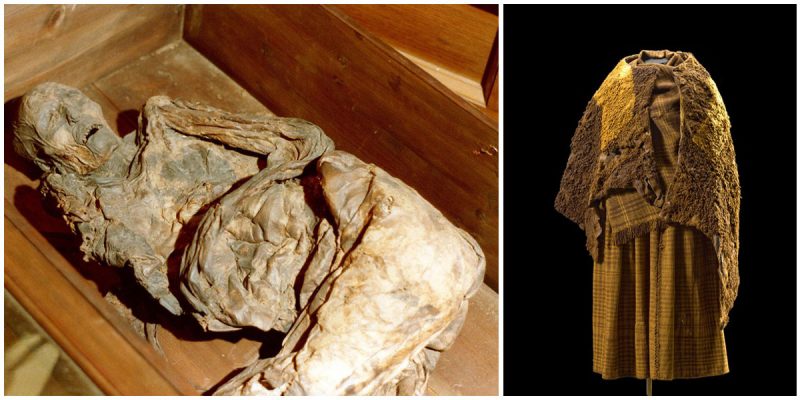More than 500 bodies and skeletons were buried in the peat bogs in Denmark between 800 B.C. and A.D. 200.
In 1879, Niels Hanson, a school teacher in Ramten, was digging peat turfs from a peat bog near Ramten, Jutland, Denmark. While doing this, he recovered a bog body of an elderly Iron Age woman. The body became known as “Huldremose Woman” or “Huldre Fen Woman”.
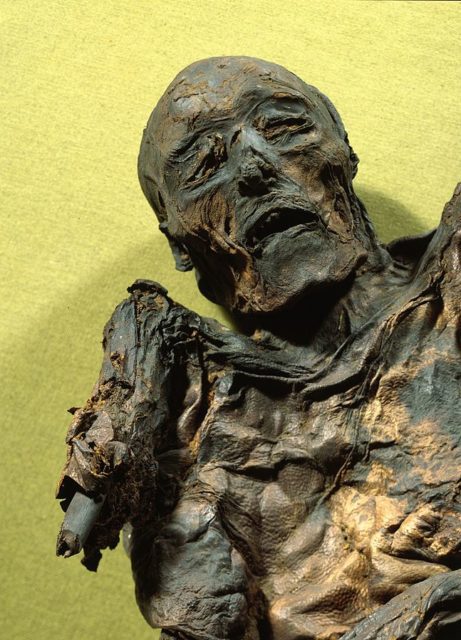
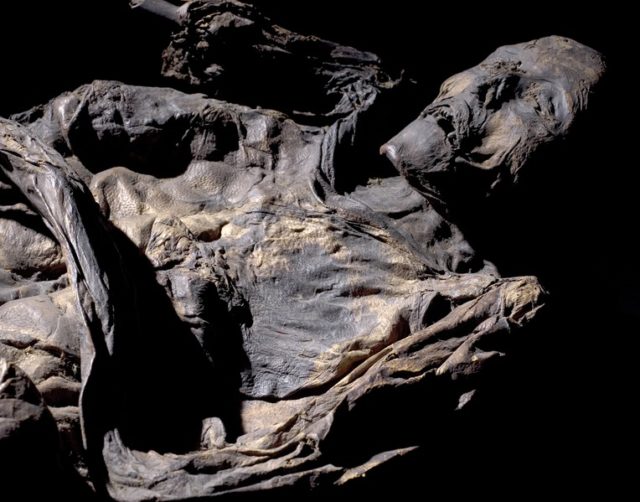
Supposedly, the woman had passed away sometime between 160 B.C. and 340 A.D. It is believed that she lived at least 40 years, which to the standards of the time was a very long life. Like most of the bog bodies found in Denmark, the woman from Huldremose was fully clothed.
More than 130 years after its discovery, it remains one of the best preserved and best-dressed bog bodies. This discovery offered a rare opportunity to understand the clothing of the Iron Age in Northern Europe and Scandinavia.
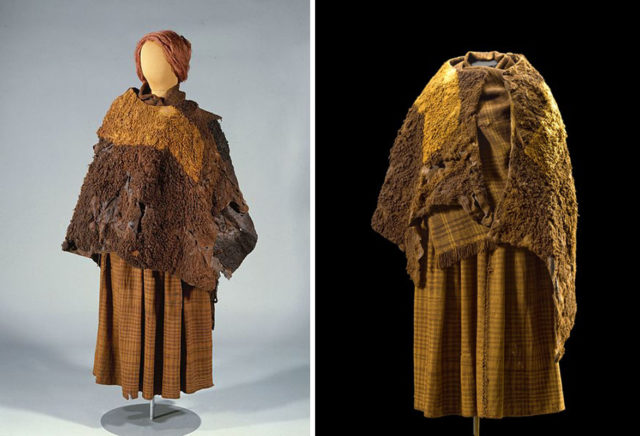
She was dressed in a costume consisting of a woollen skirt (tied at the waist with a thin leather strap inserted into a woven waistband), a woollen scarf (139-144 cm in length and 49 cm in width, wrapped around the woman’s neck and fastened under her left arm with a pin made from a bird bone) and two skin capes.
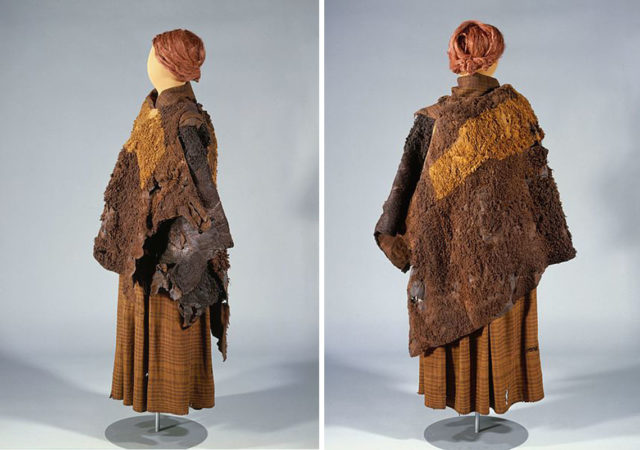
The fur coats she was wrapped in were made from the skin of 14 sheep. The sewn-in objects have probably functioned as amulets. Not only was her costume of high quality; it was also colored in a multitude of colors. olor analysis has shown that originally the skirt was blue and the scarf was in red color.
The finding of the woman has encouraged many different debates and interpretations over the years. Medical analysis revealed that she had received a cut to her upper arm, removing her arm from the rest of her body before she was deposited in the peat.
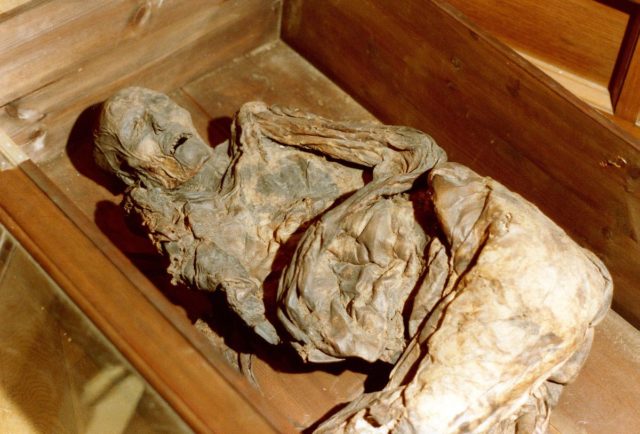
It was previously believed that the cut to the arm was the cause of death and the woman died as a result of a subsequent loss of blood. However, later forensic analysis found evidence of strangulation, her hair was tied with a long woolen rope, which was also wrapped around her neck several times.
The mummified remains are exhibited at the National Museum of Denmark and the elaborate clothing worn by the Huldremose Woman has been reconstructed and displayed at several museums.
